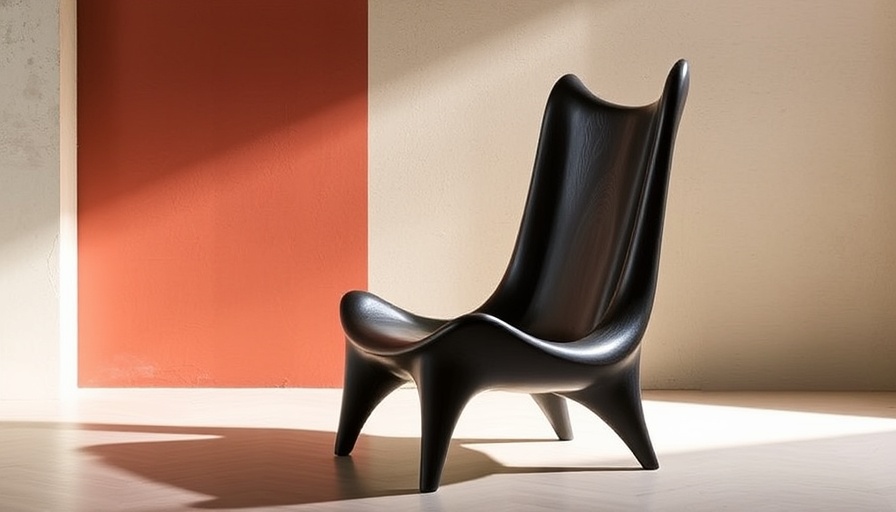
Discovering the Hidden Elegance of Gaudí's Designs
The Battló Chair, originally crafted by the legendary architect Antoni Gaudí, embodies a rare blend of artistic expression and functional design. Recently, Casa Valle has reimagined this iconic piece by draping it in a dark ebony stain, creating a striking contrast to its original hues. This transformation is reminiscent of how modern aesthetics often converge with historical craftsmanship, allowing the chair to transcend mere furniture and become a statement piece in any workspace.
Why Ergonomics Matter in Remote Workspaces
For digital nomads, creating a comfortable and efficient workspace is vital for productivity. The Battló Chair’s ergonomic features, such as its sculpted form and supportive structure, can assist in maintaining good posture, reducing fatigue during long hours of work. Implementing ergonomic principles, as seen in Gaudí’s designs, promotes a healthier work environment that can improve focus and efficiency. This is particularly important for remote workers who might spend several hours a day seated.
Transforming Your Workspace with Iconic Furniture
Integrating iconic designs like the re-stained Battló Chair into your workspace can inspire creativity and enhance your work environment. The chair's new dark finish adds a modern touch that complements various decor styles, making it an ideal addition for those seeking to create a unique and functional home office. By strategically selecting furniture that not only looks good but also supports wellness through ergonomics, you can design an efficient workspace that reflects your personality.
Future Predictions: The Evolving Landscape of Workspace Design
As remote work continues to gain popularity, the design of workspaces is expected to evolve further. Furniture that marries aesthetic appeal with functionality will become increasingly prized. Designers will likely focus on sustainability, using materials that are not only luxurious but also environmentally conscious. The Battló Chair, with its updated look, exemplifies this trend; a piece that glorifies both the past and the future of design.
Creating a Balanced Atmosphere for Well-Being
Incorporating aesthetically pleasing yet ergonomic furniture plays a crucial role in boosting mental health and productivity. A workspace accentuated by iconic pieces such as the Battló Chair creates an uplifting environment. The dark ebony stain provides a grounding effect, suitable for meditation and focus. Styling your workspace with such mindful choices can lead to an overall sense of well-being, aligning with the wellness trends that are becoming commonplace in today’s working environments.
Essential Actionable Tips for Choosing Ergonomic Furniture
1. **Prioritize Comfort:** When selecting your chair, ensure it provides good lumbar support to maintain spine health. The Battló Chair's curves and supportive structure exemplify this principle.
2. **Consider Height Adjustability:** A multi-functional workspace requires furniture that can adapt to various needs, especially for different tasks throughout the day. Look for chairs that can adjust to your desk height.
3. **Material Matters:** Choose furniture made from breathable materials, especially if you’ll be sitting for extended periods. The updated finish of the Battló Chair highlights the importance of quality materials in achieving both style and comfort.
4. **Create a Flow:** Ensure your workspace allows for movement. Furniture placement should facilitate easy transitions between sitting, standing, and walking.
The Emotional Impact of Art-Inspired Designs
Surrounding yourself with meaningful and artistic furniture can increase happiness and productivity. The reimagined Battló Chair is not just a functional item; it’s a piece of art that sparks creativity. This notion ties back to the idea that the environment we create affects our mental state and productivity levels.
As a digital nomad, making thoughtful choices when selecting workspace furniture is essential. The unique designs and ergonomic features of pieces like Casa Valle’s newly stained Battló Chair can elevate not just the aesthetic of your workspace, but your overall working experience. Explore the beauty of combining art with functionality in your home office today!
 Add Row
Add Row  Add
Add 




Write A Comment